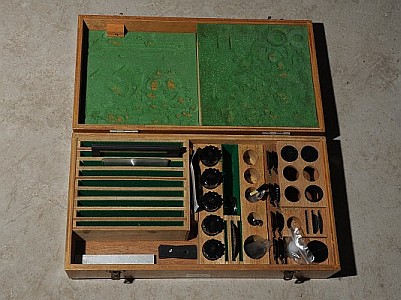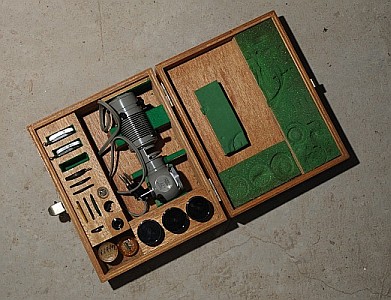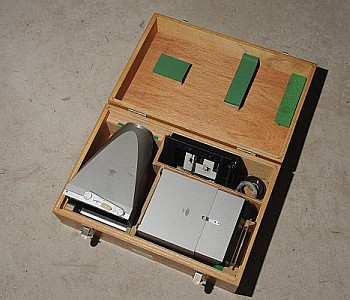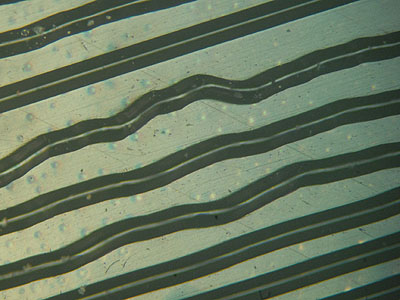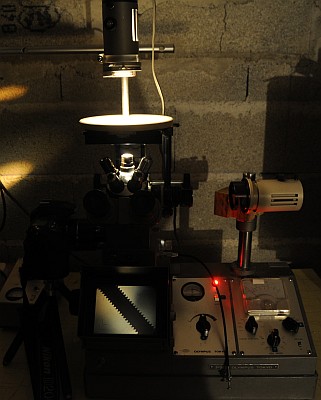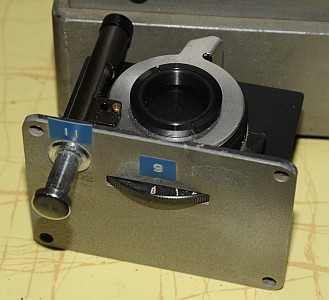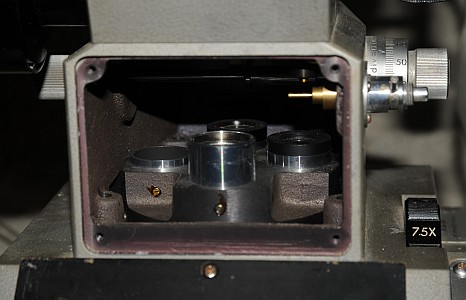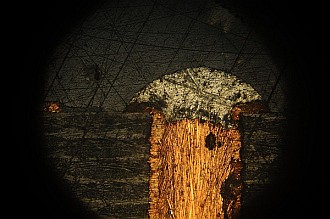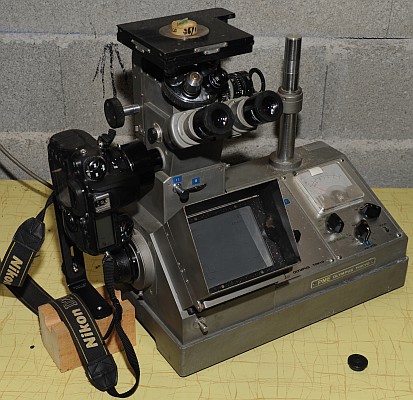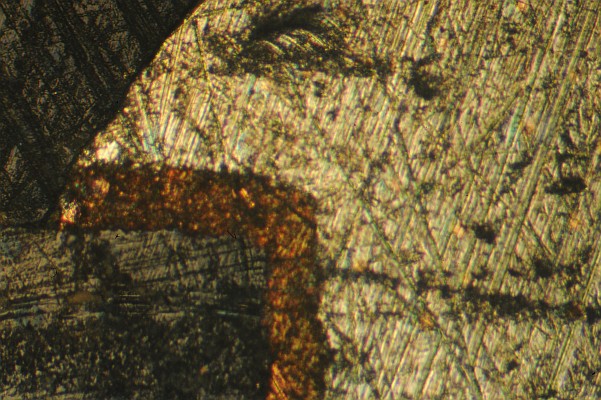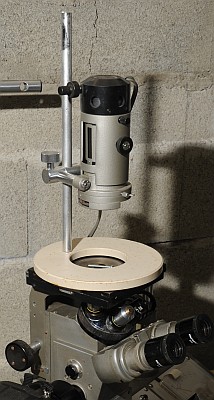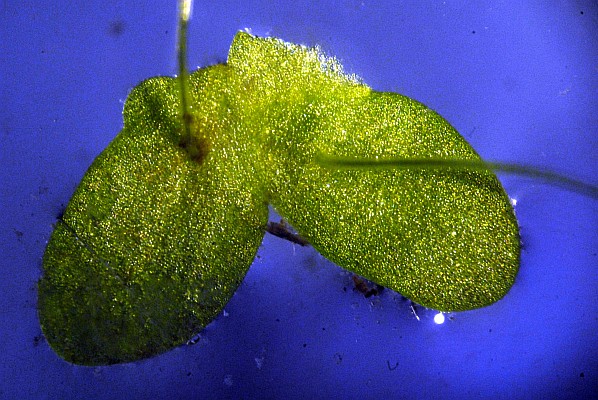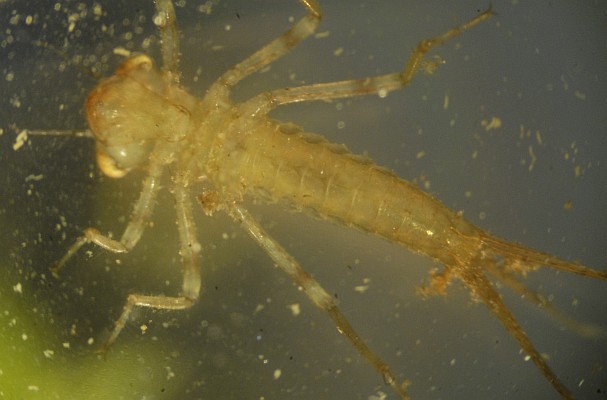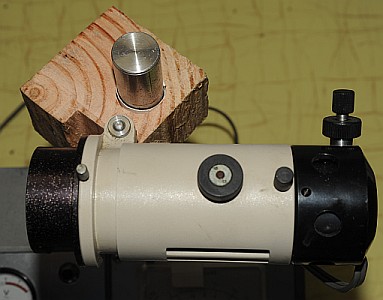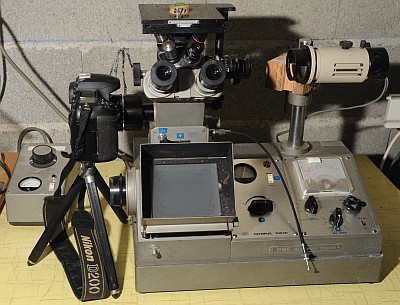The last of my Olympus microscopes : an
inverted metallurgical instrument Olympus PME from the 1970s
- a fortuitous
purchase.
by Daniel Nardin, France
| In August 2010, I bought a set of
microscope
equipment sold by a private seller on the French second hand web site
"Le bon coin". It probably originated from a laboratory of
metallography
or electronics... One of the two main elements of the set is this inverted metallographic microscope shown right. The design of this type of microscope incorporates a heavy and wide base which contains the electrical supply, a light metering system, a camera link and a frosted screen. This is an Olympus PME, model sold by Olympus from 1967! (For a short history of the firm see: http://www.olympus-global.com/en/corc/history/micro/headstand.cfm ) It is equipped with five objectives of type M from the 1970s; the design in which Olympus used 37 mm parfocality intended for a 210 mm tube length. The characteristics of these optics are described in the brochure below on pages 8-10: http://www.alanwood.net/downloads/olympus-micro-optics.pdf . The microscope did not look in fine condition; The original lamp, the two light and colour temperature sensors were missing. (There was in the auction an Olympus EMM-7 cell. Probably, the former owner did not try to repair the breakdown of the base. He replaced the complex internal system by external accessories.) |
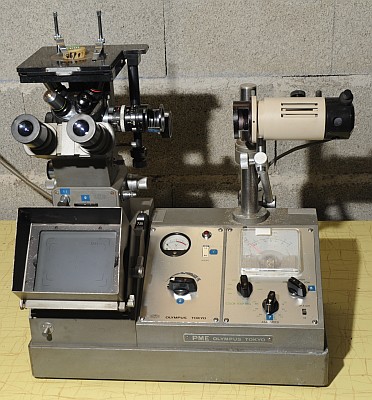 |
